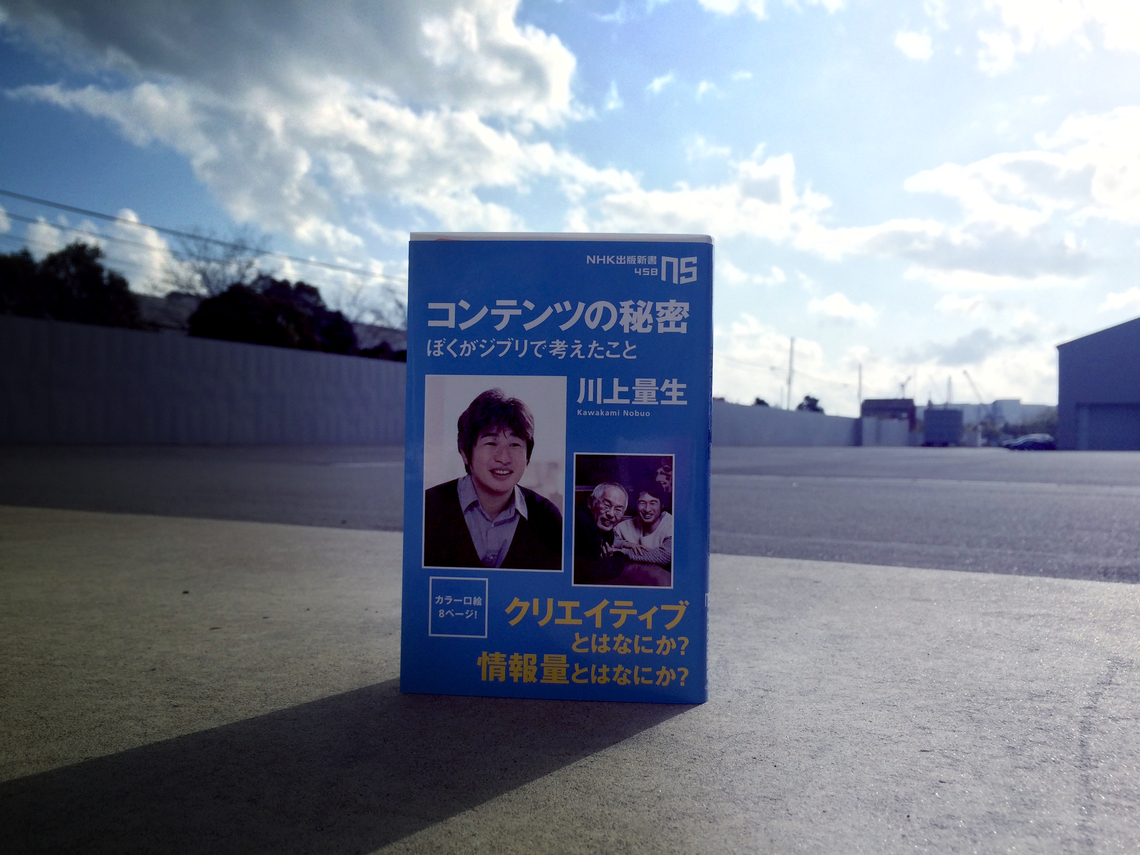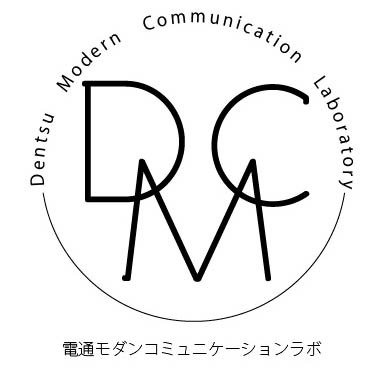Note: This website was automatically translated, so some terms or nuances may not be completely accurate.
What exactly is content? What do creators actually do?
This time, I would like to discuss Mr. Kazuo Kawakami's book, "The Secret of Content: What I Thought About at Studio Ghibli" (NHK Publishing).
Mr. Kawakami is the Chairman and Representative Director of Dwango, and was also involved in operating Niconico Douga at Niwango. He is also the Chairman and Representative Director of the recently established KADOKAWA・DOWANGO. However, for some reason, he has been working as a trainee producer at Studio Ghibli for several years now. As the title suggests, this book details Mr. Kawakami's thoughts on "What is content? What do creators actually do?" based on his experiences at Studio Ghibli.
According to the book, "content" is "the expression of images within a creator's mind," and "creators use content as a medium to convey the images within their minds to users."

Objective Information Volume and Subjective Information Volume
A key concept underlies the reasoning leading to this conclusion: "information volume." This term is frequently used in animation production, as in "This shot lacks information volume" or "There's too much information volume; we should reduce it." In animation, "information volume" simply refers to "the level of detail in the artwork," or more specifically, "the number of lines."
Animation is generally preferred by children because, compared to live-action, its visuals are simplified, resulting in less "information quantity" and thus greater accessibility. However, Ghibli films stand out within animation for their high "information density." This allows them to appeal to adults as well, and because one viewing isn't enough to grasp everything, people return to theaters multiple times. Even with annual TV broadcasts, their ratings reportedly don't decline. That said, it's not simply a case of "more information density is always better"; there's an ambivalent aspect where too much can make things overly complex.
If we simply rank them by the amount of information:
Live-action > Highly detailed animation > Minimalist animation
So, does this mean Ghibli animated films are inferior to live-action in terms of expression, or that the imagination required to receive them is poorer than that needed for live-action? Of course not.
Here, this book introduces a hypothesis: might "information quantity" actually consist of two types – "objective information quantity" and "subjective information quantity"? "Objective information quantity" refers to "the amount of information measurable by objective standards, from the number of lines in animation to the number of pixels in a computer image." "Subjective information quantity" refers to "the amount of information recognized by the human brain." The inequality mentioned earlier is based solely on "objective information quantity." Focusing on "subjective information quantity" might reveal a different relationship.
What exactly does "the amount of information recognized by the human brain" mean? Take, for example, the artwork of director Hayao Miyazaki. Upon closer inspection, it's often said that even parts that shouldn't be visible to the eye are somehow contained within a single frame.
In 'Howl's Moving Castle', there's a scene where Howl flies over the town. Both the town's full panorama and Howl are contained within a single frame.
Normally, if the entire town were shown, Howl would appear so small he'd be barely visible. Conversely, if Howl were shown large, only a small part of the town's scenery could fit. The director wanted to show both the town's full view and Howl. To achieve this, he had to resort to a trick.
The result is a frame where both the town's full view and Howl are clearly depicted.
(P.60)
To show the viewer exactly what we want them to see, we compress even parts that wouldn't appear in live-action footage into a single image. Conversely, we omit parts that aren't necessary to convey. Animation, which allows this kind of compression, can sometimes possess a "subjective information content" greater than that of live-action.
Using the terms "objective information content" and "subjective information content," this book defines "content" as follows:
(P.70)
Simultaneously, we organize this into the following inequality:
・Objective information quantity: Reality > Content
・Subjective information quantity: Reality < Content
(P.70)
The answer lies within the brain
As an example to understand these concepts of "objective information quantity = reality" and "subjective information quantity = content," "caricatures" are introduced. Setting aside realistic caricatures (≈ portraits), simplified caricatures with stylized features can be instantly recognized as "that person" (provided they're well-drawn), even when compared side-by-side with the actual person's face. Yet, upon closer inspection, they don't actually resemble the person. We perceive similarity, yet they're not similar. It's a strange phenomenon.
Since I can't draw caricatures myself, I'll share a famous internet meme instead. So, who on earth is this?
Nishikori
First hint: It's not tennis. It's baseball.
Second hint: It's not the name. It's the face.
The answer is Hideki Matsui, formerly of the Yankees. Can you see it? If you imagine the "ri" as an ear and focus on the area right around the center of the face, doesn't it start to look like him? Again, Matsui's actual face isn't made up of four hiragana characters, so it's similar yet not similar. Why does this happen?
Caricatures and sketches don't imitate real humans or animals; they imitate the humans and animals in our brains.
In other words, people who think caricatures or sketches look similar aren't comparing them to real humans or animals. They're comparing them to the humans and animals in their own minds and finding them similar.
(P.81-82)
This simultaneously suggests the following important points:
① The image of the subject must already be implanted in the brain. (You wouldn't even know if a portrait of someone you don't know is accurate.)
② Real human faces and the faces stored in people's minds are apparently quite different. The brain compresses and simplifies information for storage. (Even if you can picture a friend's face in your mind, drawing it on paper is difficult, right?)
③ The images within each person's brain are similar. There is commonality. (Many people can similarly feel that a certain portrait "looks like" the subject).
By substituting "reality" for actual faces and "content" for caricatures in the above points, we can establish universality. This book summarizes it as follows:
Isn't much of the work considered creative in the world about skillfully finding the image within your own brain and presenting it to the real world as "This is what it is!"? In other words, it boils down to this:
Content is the reproduction of an image within the brain.
(Omitted)
Content creators are people who find and reproduce the "characteristics of the world" within their brains. But finding these within the brain is no easy task. That very struggle is the pain of creation, and the "characteristics of the world" discovered within the brain through that pain are surely the truth and mystery of content.
(Omitted)
That's what I thought.
Director Hayao Miyazaki stated at his retirement press conference, "Animation is about peeking at the 'secrets of the world.'" He also said, "The secrets of the world are hidden in the wind, in people's movements, in various expressions, in the movements of the body's muscles."
(Omitted)
The mission of a creator is to find and recreate the "secrets of the world."
(P.89-91)
What exactly is content? What do creators actually do? Perhaps we're beginning to glimpse the secret.
In advertising communication too, methods for creating content are often employed. Furthermore, the so-called marketing term "insight" could also be described as the "shared human feelings" hidden within the brain. It's that thing about "insights aren't made, they're found." Redefining it as "discovering the 'characteristics of the world' and 'shared human feelings' within the human brain" = "finding ideas and insights" might make what we do a bit clearer. (Though it doesn't make it any simpler...)
This book also covers many other fascinating topics related to "What is content? What do creators actually do?" including how the latest research in deep learning—a field of machine learning—is achieving results remarkably close to human brain function (notably, the recent Den-O-sen AI chess tournament was hosted by Mr. Kawakami's Dwango), and discussions on "patterns" and "originality" within content. I highly recommend picking it up.

Was this article helpful?